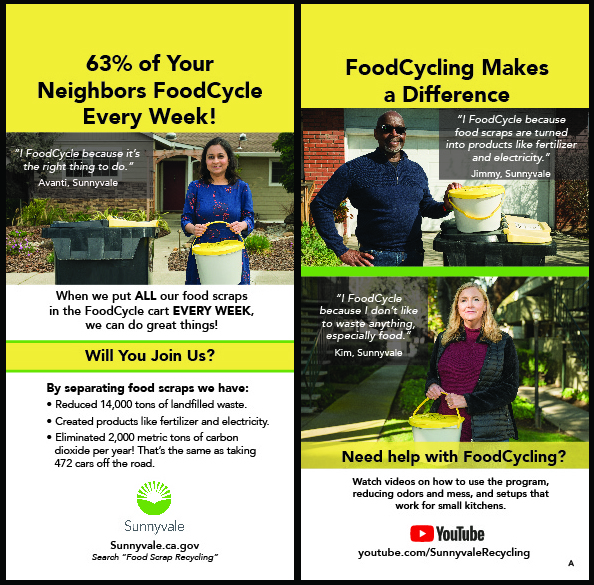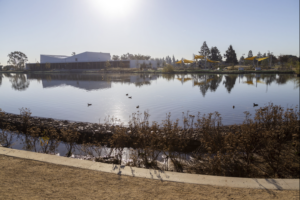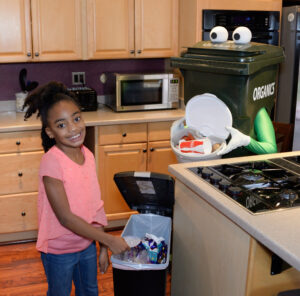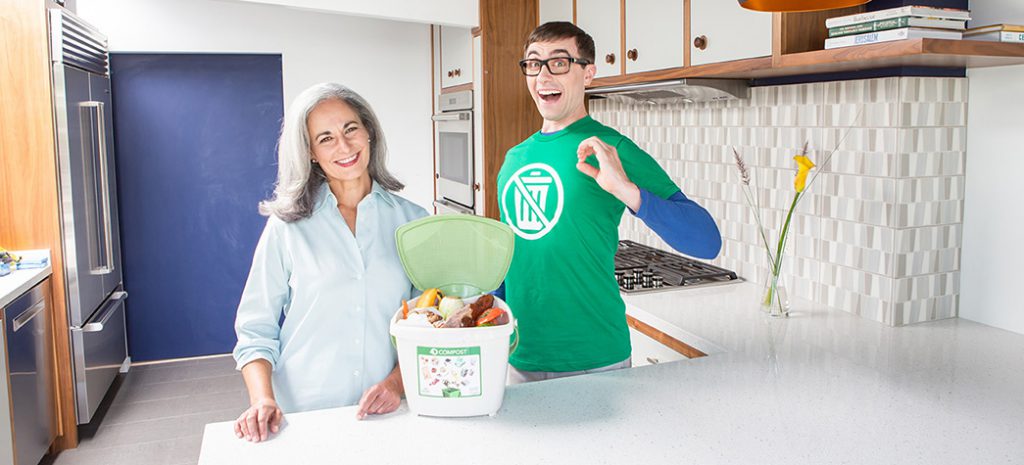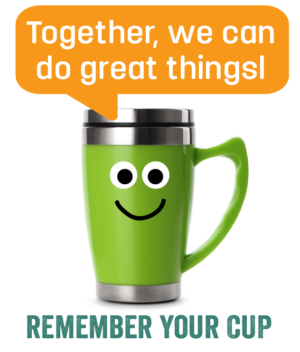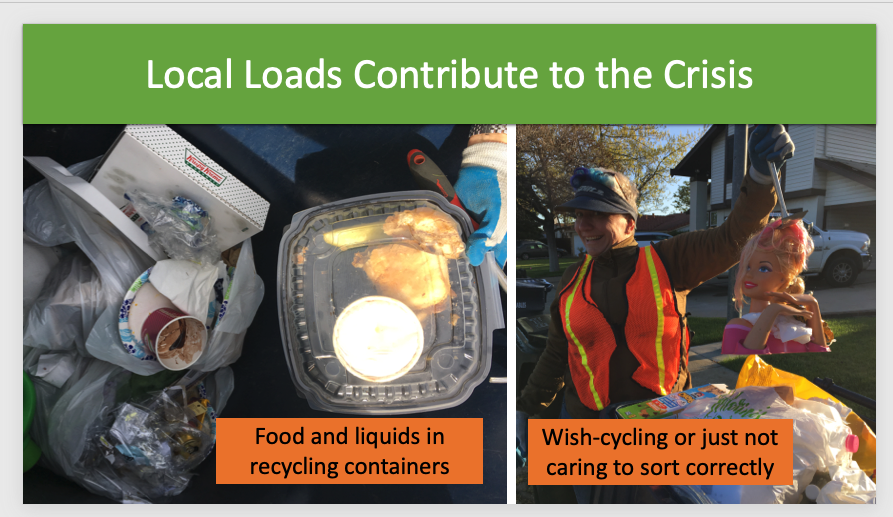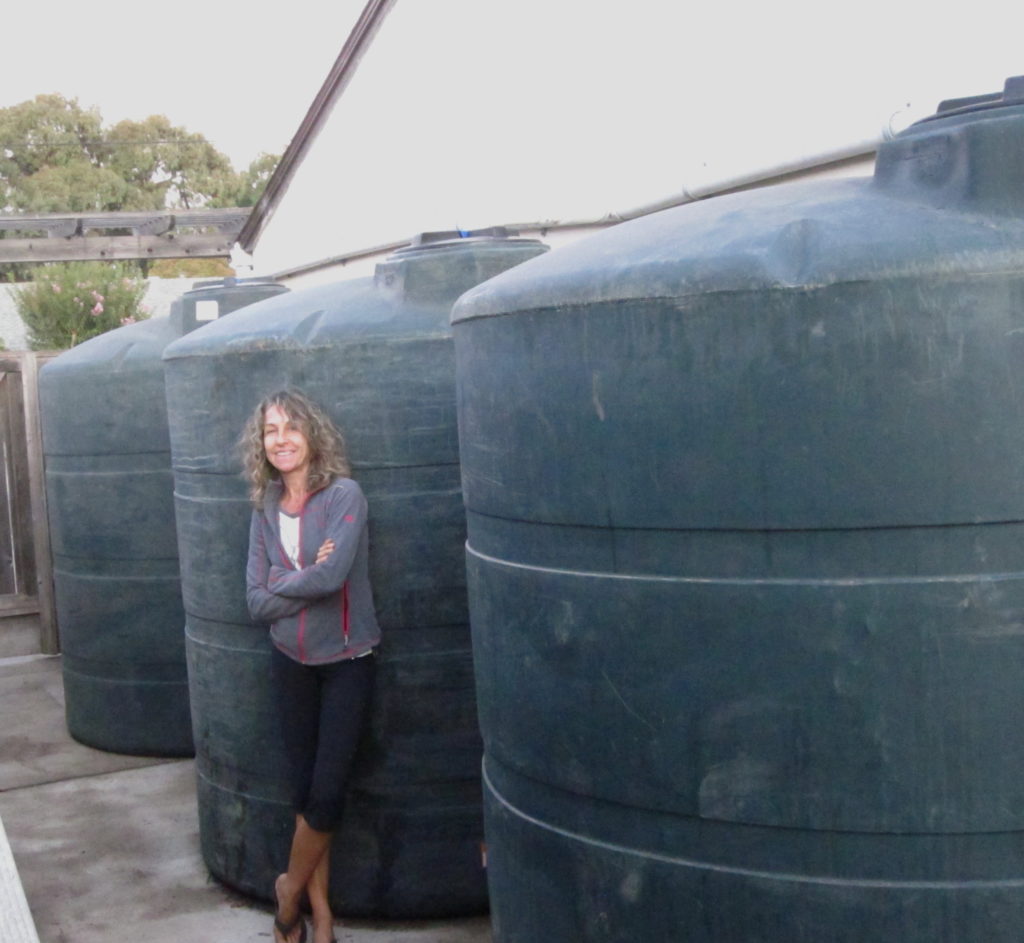 Food scrap and organics collection programs pose a challenge to public agencies in terms of low participation and high contamination, especially where businesses and multi-family properties are concerned.
Food scrap and organics collection programs pose a challenge to public agencies in terms of low participation and high contamination, especially where businesses and multi-family properties are concerned.
There’s turnover in staff and residents, and often there are language barriers. Producing content in multiple languages seems like one logical solution, but doing three separate videos can impact the budget and seem like a daunting logistical challenge…but it can be simplified!
Over the past few years, the Gigantic team helped City of Sunnyvale produce multilingual video content in a streamlined way to ensure they could produce content in multiple languages for a reasonable budget.
With the following tips, we created separate business-facing videos in Chinese, Spanish and Vietnamese – using the same original footage shot in a commercial kitchen – for a reasonable budget.
Top tips for producing multilingual video content:
- Show, don’t tell. Tell the story with filmed footage. Demonstrate key behaviors so your content instructs without the use of words as much as possible.
- Use voice-over instead of dialog for extra details. This way, you can avoid dubbing over a person speaking to the camera.
- Put key messages on-screen with simple graphics. These can be translated, so the video works even with sound off.
- Film in real locations that resonate with the audience. This way the setting also provides context without using words.
- Create the multilingual versions using the same filmed footage to save money. Just translate and record voice-over in each language and translate the screen graphics.
- Promote in-language too. The best video must be seen to be effective. Create a keyword-rich video description in English and translate this, too. Post to your website, YouTube, Facebook or other channels using the translated promotional blurb. You can pay to promote videos specifically to online viewers that use any one of your targeted languages. Without paid promotion, most videos will not get views
Also, check out the Food Scraps Recycling for Apartments and Condos videos filmed with these same tips, in English, Chinese, and Spanish.
Business-facing Tips Videos for Sunnyvale:
 Gigantic Idea Studio developed a scope of work that included as much of the community-based social marketing (CBSM) process as time and budget would allow:
Gigantic Idea Studio developed a scope of work that included as much of the community-based social marketing (CBSM) process as time and budget would allow: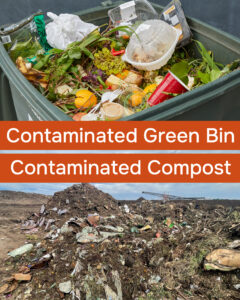 Partnering with
Partnering with 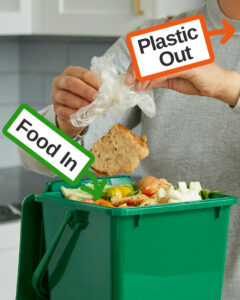 Instructional messaging: “Keep All Plastic Out of the Green Bin” and “Food In/Plastic Out”.
Instructional messaging: “Keep All Plastic Out of the Green Bin” and “Food In/Plastic Out”.